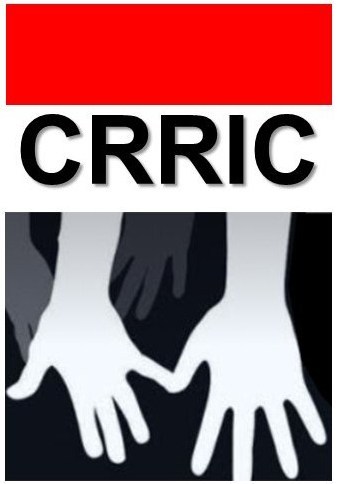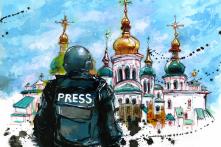Journalism and the war: is there room for the standards we are used to?
Through the decades, journalism has always given people the opportunity to be informed and cautioned. Being a tool for discovering the truth, journalism has the opportunity to build a conscious and aware society. But to do so, journalists must follow coherent rules and work values, which are presented as journalistic standards. They are constant cornerstones of journalism ethics and help assure that the given information is reliable and the media outlet can be trusted. However, recent events have shown that during hard times, even journalistic principles could undergo crucial changes.
There have been many situations when reporters, in pursuit of their obligation to the truth, neglected the safety of society or even received cautions from the government. Of course, depending on the circumstances, such behavior could be justified; however, some examples say the opposite. Moreover, in some unprecedented historical events, such as the Russian-Ukrainian war, journalistic principles are rather harmful than obligatory.
Apart from being the biggest bloodshed in Europe since World War II, the Russian invasion of Ukraine is also one of the most media-covered wars, having been mentioned in the news every single day and, unfortunately, not without mistakes or misinformation. The Russian-Ukrainian war has demonstrated that journalistic standards are not an unchanging constant. On the contrary, they should be flexible and dependent on the challenges of society.
For instance, timely news coverage has always been considered the main journalistic goal that should always be achieved. However, as the war has clearly shown, sometimes “immediate” could also mean “detrimental”. Many times journalists put their interests above their security and the security of the soldiers while broadcasting from the frontline or releasing information that was not allowed to be released or simply has not been verified yet.
Without a doubt, the 21st-century information field plays no less important part; it was discussed as many times as the front line. Thus, media outlets could have a great impact on how things are going. For instance, many times journalists published information about new weapon arrivals or significant military aid before it was confirmed by the authorities. This was creating excessive discussions, which were not always giving a hand to the Ukrainian government.
The Russian-Ukrainian war has also changed the role of objectivity and the balance of opinions in journalism. These standards were always considered the main journalistic constants; however, many times even the biggest media outlets took them too literally, to the point where the criminal and the victim were equal.
The biggest example of that is the Western media’s coverage of the Kakhovka dam’s destruction. Trying to find the balance in coverage of news of such a scale, in their articles, the authors were not mentioning who destroyed the dam; the headings were just saying that the information was not verified yet and it was uncertain which side was responsible for the damage.
Surely, it is the way the media should cover unverified information, but at the same time, during such a scale of damage, similar communication could confuse readers, distort information, and create space for propaganda. Not specifying how the destruction influenced the situation for both sides only puts the aggressor and the victim in the same box.
This was exactly the way RTE reported the news. In their article, journalists explained possible reasons for the destruction of the dam. According to them, “Ukraine said Russia had destroyed it”. At the same time, the Russian side of the story was explained more in detail: “Some say it was destroyed by Ukrainian shelling, and others say it collapsed due to earlier damage”. Even these few sentences might have confused the readers, giving them the view that Russia was largely responsible for the harm.
Without a doubt, the media should not give distorting emphasis. However, even if the information was not confirmed by the independent side, the media should have analyzed the situation and given their readers the context of current affairs.
The Guardian stands as an example of such fact-based communication. They explained the destruction of the Kakhovka dam to their readers. They analyzed how profitable the destruction was for both sides, noting the damage to the environment, ecology, and agricultural industry of Ukraine. In addition, the author emphasized how destruction can affect hostilities on both sides. Readers were able to clearly understand that the culprit of the damage was Russia because for Ukraine, the destruction was more harmful, according to the arguments. Such background information was able to protect readers from Russian propaganda, which by that time was already in use by Russian media.
What is more, in striving for balance, journalists often manage not to call things by their names. For instance, Deutsche Welle not only did not mention who could be responsible for the blowup on the dam but also described the disaster in the wrong way, which made it seem less harmful and dangerous. In the heading, they named the destruction of the dam “flooding” and “floodwaters”, which could change the context as “floodwaters” is a natural phenomenon, while the destruction of the hydroelectric power station is a conscious terroristic step.
So, after the examples mentioned above, the question remains the same: during the war, is there room for the standards we are used to? Many situations have demonstrated that the same timing, objectivity, or balance are not always the right choices. Journalism should be flexible—not to play along with the victim but to protect society from misinformation and propaganda. Information could not always be verified in time as some processes take longer, but the media should always give the readers context and background for the contemplation and prioritize safety and public interests. Journalists should not be only translators of different opinions; they should not repeat what everyone says. On the contrary, qualitative journalism distinguishes fact from opinion and gives accurate information. These are other journalistic values that every conscious media worker should ponder while asking themselves: “Should we follow standards in this particular situation, or under these circumstances are they not more unchanging constants?”.
Maryana Bahlai—-CRRIC’s Mitac Intern 2023





